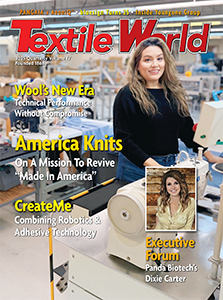US textile manufacturers have urged Congress to eliminate some textile products from the list of
products slated for duty-free treatment under a miscellaneous tariff bill, claiming the products do
not qualify for such treatment. Both the House and Senate are expected to act before adjournment on
legislation granting duty-free treatment for a wide range of products, including textiles and
apparel, that are given special tariff treatment because they do not compete with US-made products.
Both the National Textile Association (NTA) and the National Council of Textile Manufacturers
have objected to nearly 30 product lines because they compete with products made here or are not
eligible for the special treatment under terms of free trade agreements. In addition, they have
suggested that duty-free treatment be given to an additional number of textile fiber products,
which they say that do not compete with domestic products. Those include such things as some rayon
and acrylic fibers, cashmere and camel hair.
The NTA filing cites opposition to 24 proposed duty suspensions included in the miscellaneous
tariff bill. For example, NTA says some garments made in Costa Rica do not qualify for duty-free
treatment under the Central America-Dominican Republic Free Trade Agreement (CAFTA-DR) because they
are made of fabric from outside of the CAFTA-DR region, and the association points out there are
domestic manufacturers of the fabric. NTA says “CAFTA is very specific in that it requires garments
of this type to be constructed from fabrics that were formed either in the United States or one of
the other CAFTA countries.”
Other bills NTA objects to cover certain women’s sports bras and tank tops made with fabrics
its members make. Other objections are raised with respect to certain warp-knit fabrics and
nonwovens and a number of fire-retardant fabrics.
NTA says the miscellaneous tariff bill is intended to promote US manufacturing by providing
limited tariff relief to domestic manufacturers that use inputs that are not available from a
domestic source, and “not as a vehicle to swell the profit margins of importers and retailers of
finished goods to the discouragement of domestic manufacturing.”
More detailed descriptions of the products in question are available on the NTA daily blog:
http://nationaltextile.blogspot.com.
December 15, 2009




